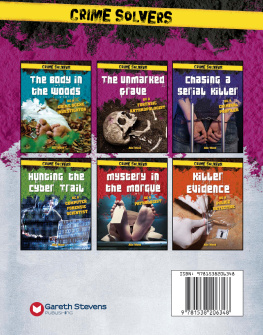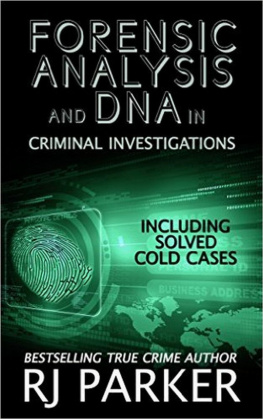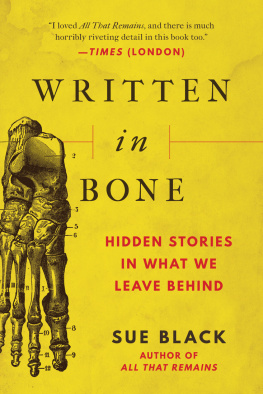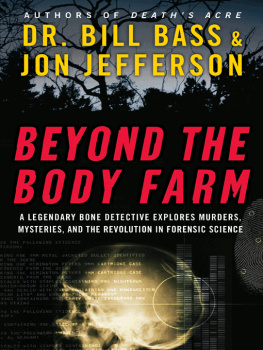BONE REMAINS
Mary H. Manhein
BONE REMAINS
Cold Cases in Forensic Anthropology
Louisiana State University Press  Baton Rouge
Baton Rouge
Published with the assistance of the Borne Fund
Published by Louisiana State University Press
Copyright 2013 by Mary H. Manhein
All rights reserved
Manufactured in the United States of America
FIRST PRINTING
DESIGNER: Mandy McDonald Scallan
TYPEFACE: Calluna
PRINTER AND BINDER: Maple Press
Library of Congress Cataloging-in-Publication Data
Manhein, Mary H. (Mary Huffman)
Bone remains : cold cases in forensic anthropology / Mary H. Manhein.
pages cm
ISBN 978-0-8071-5323-9 (cloth : alk. paper) ISBN 978-0-8071-5324-6 (pdf) ISBN 978-0-8071-5325-3 (epub) ISBN 978-0-8071-5326-0 (mobi) 1. Forensic anthropologyCase studies. I. Title.
GN69.8.M35 2014
599.9dc23
2013010275
The paper in this book meets the guidelines for permanence and durability of the Committee on Production Guidelines for Book Longevity of the Council on Library Resources. 
For my four grandchildren,
Will, Ben, Mia, and Colin Manhein,
and my two great nieces, Isabelle and Maggie Weaver.
Life is good with you in this world.
Contents
Illustrations
BONE REMAINS
Introduction
Bone Remains is the final installment in a nonfiction trilogy about my career in forensic anthropology. It follows The Bone Lady and Trail of Bones. I chose the title Bone Remains because often bones are all that remain to tell the story of a persons life and death, and because lifeless human bodies are referred to as remains. This book contains accounts of forensic cases where identifications have been solved and others where, currently, identifications are unsolved. They are among the hundreds and hundreds of cases that have come through the Louisiana State Universitys Forensic Anthropology and Computer Enhancement Services (FACES) Laboratory, of which I am the creator and director. For more than thirty years, it has been my privilege to help solve the identity of many of these persons and to try to determine what happened to them at or around the time of their death. By highlighting within these pages a few of the unsolved cases from my laboratory experience, I hope to keep them in public view, perhaps to be recognized by someone who can help. Also included in the book is a sample of the many historic cases on which I have worked, giving the reader a glimpse into the past as seen from the perspective of the bone lady.
So often, one of the first questions I am asked is, How in the world did you get into this business? It all began one day in the fall of 1980 when I took an anthropology course because it sounded like it would be interesting. I was scheduled to graduate in May 1981 with a degree in Englishspecifically, creative writingand I wanted to take a few courses before graduation on topics I had never studied before. The class was called Old World Archaeology. Less than two weeks into the course, I was hooked on anthropology. I had never had a course that covered the beginnings of human life on earth. The fossils were fascinating to me, and the researchers who spent their lives looking for evidence of the past captivated me with their quests for human origins. By the end of the course, I wanted to change my entire major, one semester away from graduation. I decided instead to go back to school after graduation and get another degree, one in anthropology. I soon found out, though, that you could simply go on to graduate school in a particular field if your grades were good enough and if you made a decent score on the Graduate Record Exams. I was encouraged by Dr. Sharon Goad, the archaeology professor, to take a field school for a couple of weeks in the summer of 1981 to see if I really wanted to go to graduate school in anthropology. I spent two of the longest weeks of my life at Poverty Point in Epps, Louisiana, working in the hot sun all day on a site that was several thousand years old. Digging in that hard clay soil did not inspire me; it only tired me. I was not sure I wanted to pursue archaeology after that, but I knew there were four subdisciplines in anthropology from which to choose: archaeology, biological anthropology, cultural anthropology, and linguistic anthropology. I thought that I would find the right one to fit my interests. I did.
The first semester in graduate school, I took two courses. My children were still young, and I had to take classes that did not conflict with their school schedule. One of those courses was physical anthropology with Dr. Douglas Owsley. That course changed my life forever. Straight out of Tennessee, Dr. Owsley was a new professor at LSU at the time and had begun to contact law enforcement agencies throughout the state to let them know how he could help them with cases of skeletal remains. Most of them had no idea what he was talking about. I volunteered to help in his lab and never left. From 1981 until 1987, I worked with Dr. Owsley as a graduate student and then as a research associate. When he left LSU in 1987 to work at the Smithsonian Institution (along with Murray Marks, a research associate who left soon thereafter), I continued the work of the lab with the help of a graduate student here and there.
By the early 1990s, Eileen Barrow, an artist and sculptor, had begun to work with me part time to create three-dimensional images of the unidentified sets of remains that came through our laboratory. We survived on small grants and the generosity of the agencies with whom we worked. Along the way, we were able to hire Ginesse Listi, a student who had taken an undergraduate course with me in the early 1990s and wanted to have a career in anthropology. Ginny eventually received her masters degree with us and then left to pursue her PhD at Tulane University under Dr. John Vernano. She returned after completing her course work and now is assistant lab director.
Over time, we have added to the FACES Lab team. Helen Bouzon helps with the Missing and Unidentified Database Program and has a masters degree in anthropology, which she earned working with me at LSU. She is a great organizer, and her keen sense of detail has helped us solve many a case over the years. Maria Allaire is a former police officer who was working for a coroner in Durango, Colorado, when she decided to go to graduate school in anthropology. I accepted her as a student, and she received her masters degree at LSU, completing an entomology thesis on decomposition in the mountains of Colorado. No one had conducted research like hers in that part of the country. In fact, Maria even discovered a new hybrid fly, a rare find in entomology. Maria works with the database for missing and unidentified persons, as does Nicole Harris, who became interested in our work after she excavated historic burials with us in a cemetery in north Louisiana. Nicole received her masters in anthropology from the University of Southern Mississippi and not only works with the database group but as an artist also does facial reconstruction work on both forensic and historic cases. Our newest member is Charlana McQuinn, who is from Kentucky and conducted research for her masters thesis there under my supervision. She studied decomposition rates of embalmed and unembalmed remains found on the surface and in burial contexts. Charlana is also an artist and is gaining experience in both forensic case analysis and forensic art. Over the years, scientific illustrator Mary Lee Eggart has provided enormous help with her drawings for our site maps and trauma illustrations, and more than fifty graduate students have assisted us in the lab.
Next page







 Baton Rouge
Baton Rouge